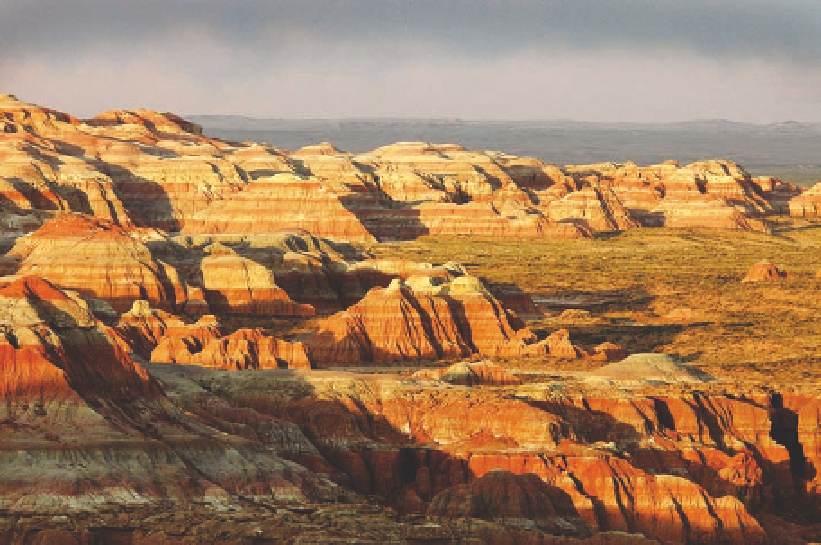Geoscience Reference
In-Depth Information
in plant cover on stabilized dunes, which leads to the
hastened if fires, intensive grazing, disruption by off-
road vehicles, or other disturbances occur at about the
observed in Wyoming dunes, but that is not true at
ming, fossils of crocodiles, primates, and tapirs date
back to the cretaceous and early tertiary periods, indi-
cating a subtropical climate. Some badlands are now
protected because of their value for paleontological
studies and the number of people fascinated by such
places. the most notable example is Badlands national
Park in western South Dakota.
Plants are sparse in badland landscapes. the few
that can be found also occur in adjacent grasslands
and shrublands, such as big sagebrush, bottlebrush
squirreltail, Gardner's saltbush, juniper, shadscale, sil-
ver sagebrush, tufted evening primrose, and western
wheatgrass. Halophytes are common. in ravines or near
seeps, basin big sagebrush, basin wildrye, greasewood,
narrowleaf cottonwood, and species of willow may be
present. the amount of plant cover varies considerably
with elevation, substrate, precipitation, and topographic
position. on steep slopes, erosion is a nearly continuous
process, which prevents plant establishment.
Because of the abrupt, finely dissected topography,
the fauna of badlands can be more unusual than the
flora. Hawks, eagles, swallows, and swifts find suitable
nesting sites on exposed cliffs, and larger animals use
the badlands year-round, finding shelter on leeward
slopes on cold, windy days. the vegetation mosaic is
unusual as well. in the Powder River Breaks of north-
Badlands
Some parts of the lowlands, known as badlands or breaks,
are nearly devoid of vegetation because of naturally high
rates of erosion associated with retreating escarpments
(figs. 9.6 and 9.7). Such areas—for example, Adobe town,
Grizzly Buttes, Hell's Half Acre, Honeycomb Buttes, the
Powder River Breaks, and Wind River Badlands—are some
of the most fascinating landscapes in the region. Badland
topography, sometimes angular and sometimes rounded,
occurs in arid climates on shales and mudstones. the
clay-rich soils expand and contract with wetting and
drying—conditions that usually prevent plant establish-
ment and facilitate erosion. Flash floods are common
because of slow infiltration during thunderstorms.
Because badlands are formed by rapid erosion, they
are favorite destinations for fossil hunters. each year
new specimens are exposed on the surface. in Wyo-
Fig. 9.6. Honeycomb Buttes in
the Jack Morrow Hills north-
east of Rock Springs, one of
numerous tracts of badlands
found in Wyoming. Here the
rocks are shales, claystones,
and sandstones of the Green
River and Wasatch formations
(eocene). elevation 6,888 feet.
Photo by Ken Driese.

Search WWH ::

Custom Search